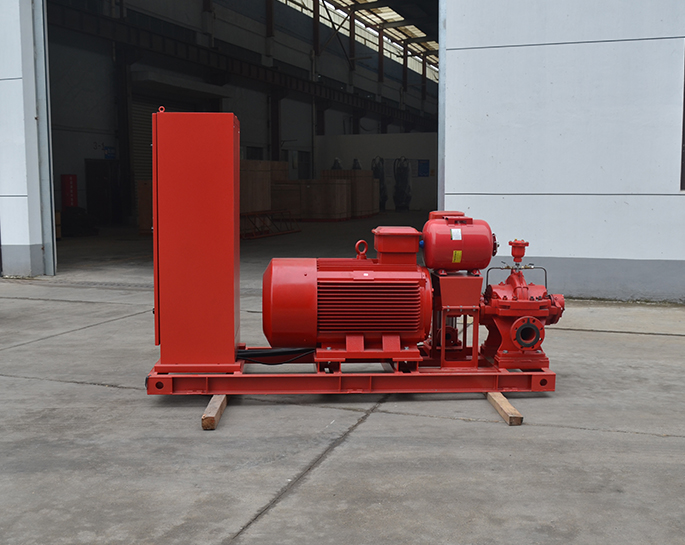How do advancements in technology impact the design and performance of firefighting pumps?
Feb 20, 2024
Share:
Advancements in technology have significantly impacted the design and performance of firefighting pumps in several ways:
1. **Efficiency**: Modern firefighting pumps incorporate advanced engineering techniques and materials to improve efficiency. This includes the use of high-performance engines, hydraulic systems, and pump designs that maximize water flow rates and pressure output while minimizing energy consumption.
2. **Automation**: Automation and computerized controls are increasingly integrated into firefighting pump systems. This allows for more precise monitoring and adjustment of pump performance, optimizing water flow and pressure based on real-time conditions. Automated features can also enhance safety by providing warnings and shutdown mechanisms in the event of malfunctions or dangerous operating conditions.
3. **Compactness and Portability**: Advances in miniaturization and lightweight materials have enabled the development of more compact and portable firefighting pump systems. This is particularly beneficial for applications where space is limited or mobility is required, such as urban firefighting, wildland firefighting, or vehicle-mounted pumps.
4. **Remote Monitoring and Control**: Some modern firefighting pumps are equipped with remote monitoring and control capabilities, allowing operators to monitor pump performance and adjust settings from a distance using wireless communication technologies. This enables more flexible deployment strategies and can enhance safety by reducing the need for personnel to be in close proximity to hazardous fire environments.
5. **Integration with Other Systems**: Firefighting pumps are increasingly being integrated with other firefighting equipment and systems, such as fire suppression systems, aerial firefighting platforms, and firefighting vehicles. This integration enables seamless coordination and operation of multiple firefighting components, improving overall effectiveness and response times.
6. **Environmental Considerations**: Advancements in technology have also led to the development of more environmentally friendly firefighting pump systems. This includes the use of cleaner-burning engines, alternative fuels, and eco-friendly firefighting agents that minimize pollution and reduce environmental impact during firefighting operations.
Overall, advancements in technology continue to drive innovation in the design and performance of firefighting pumps, leading to more efficient, effective, and environmentally sustainable solutions for combating fires and protecting lives and property.

1. **Efficiency**: Modern firefighting pumps incorporate advanced engineering techniques and materials to improve efficiency. This includes the use of high-performance engines, hydraulic systems, and pump designs that maximize water flow rates and pressure output while minimizing energy consumption.
2. **Automation**: Automation and computerized controls are increasingly integrated into firefighting pump systems. This allows for more precise monitoring and adjustment of pump performance, optimizing water flow and pressure based on real-time conditions. Automated features can also enhance safety by providing warnings and shutdown mechanisms in the event of malfunctions or dangerous operating conditions.
3. **Compactness and Portability**: Advances in miniaturization and lightweight materials have enabled the development of more compact and portable firefighting pump systems. This is particularly beneficial for applications where space is limited or mobility is required, such as urban firefighting, wildland firefighting, or vehicle-mounted pumps.
4. **Remote Monitoring and Control**: Some modern firefighting pumps are equipped with remote monitoring and control capabilities, allowing operators to monitor pump performance and adjust settings from a distance using wireless communication technologies. This enables more flexible deployment strategies and can enhance safety by reducing the need for personnel to be in close proximity to hazardous fire environments.
5. **Integration with Other Systems**: Firefighting pumps are increasingly being integrated with other firefighting equipment and systems, such as fire suppression systems, aerial firefighting platforms, and firefighting vehicles. This integration enables seamless coordination and operation of multiple firefighting components, improving overall effectiveness and response times.
6. **Environmental Considerations**: Advancements in technology have also led to the development of more environmentally friendly firefighting pump systems. This includes the use of cleaner-burning engines, alternative fuels, and eco-friendly firefighting agents that minimize pollution and reduce environmental impact during firefighting operations.
Overall, advancements in technology continue to drive innovation in the design and performance of firefighting pumps, leading to more efficient, effective, and environmentally sustainable solutions for combating fires and protecting lives and property.


.png)
.png)

.png)


